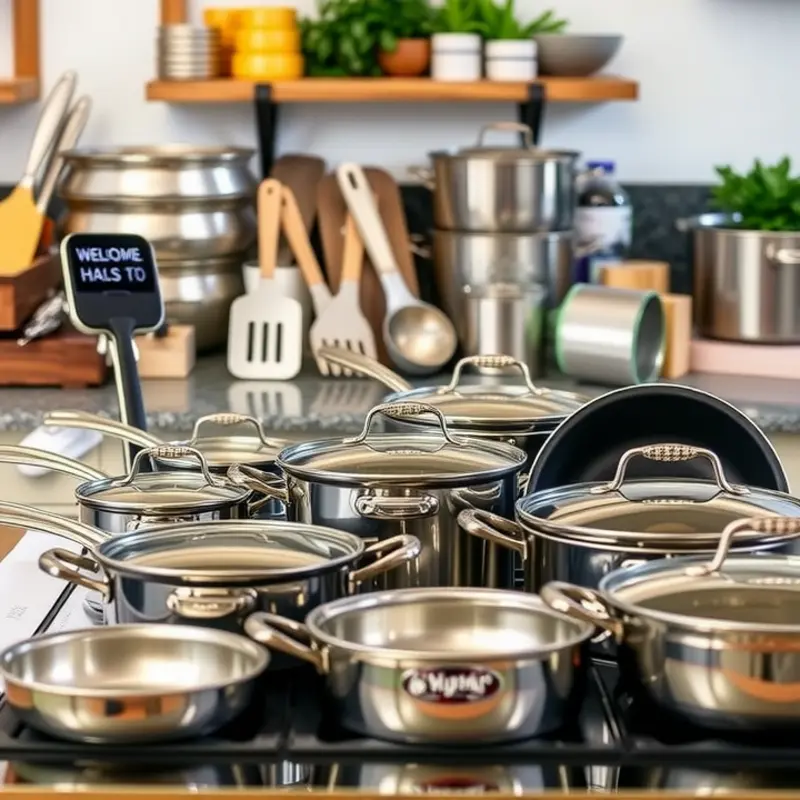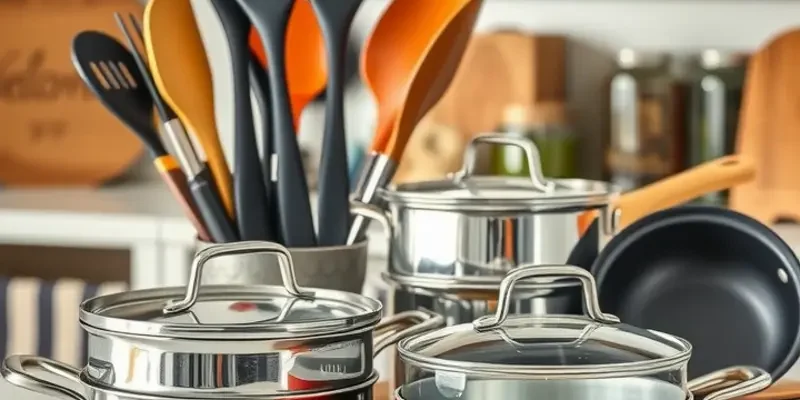Uneven cooking can lead to disappointing meals, leaving home cooks frustrated. Whether you’re making a steak, baking cookies, or roasting veggies, mastering even cooking is key to achieving culinary success. This guide provides practical, straightforward tips to help you cook dishes evenly, ensuring that everything you make is delicious and satisfying.
The Essentials: Choose the Right Tools

Uneven cooking is an all-too-familiar struggle, often linked to improperly chosen kitchen tools. Selecting the right cookware, utensils, and equipment can transform your culinary results. Begin by understanding the materials that effectively conduct heat.
Material Matters
Stainless steel, cast iron, and copper are commonly praised for their superior heat conductivity. Stainless steel is durable and resists rust and staining, making it a versatile choice for a variety of cooking tasks. Cast iron, beloved for its heat retention, is ideal for slow-cooked dishes and searing. Meanwhile, copper’s rapid heat conduction makes it perfect for precision cooking, allowing for quick adjustments to temperature.
Non-stick surfaces, while convenient, may not evenly heat as well as other materials. Consider their limitations, especially in recipes requiring consistent heat application. Each material has unique benefits, and understanding them lets you match cookware to the dish you’re preparing.
Size Significance
Pot and pan sizes impact how evenly your food cooks. Using the right size ensures heat distribution is optimal. If a pan is too small, ingredients crowd and steam rather than properly sauté. Conversely, a too-large pan can cause uneven cooking, with sections receiving insufficient heat.
For efficient cooking, choose pots and pans where ingredients fit comfortably—neither too tightly packed nor excessively spread out. This consideration minimizes steaming inappropriately for dry-heat methods and controls moisture release.
Shape Influence
The shape of your dishes also influences the cooking process. Wide, shallow pans are better for reducing liquids quickly through evaporation, while deep pots are ideal for stews and soups, where slow, even cooking is essential. A sauté pan with straight sides prevents spilling during vigorous stirring or flipping, offering stability.
Consider trying a wok for stir-fries due to its high sides and gently rounded base, which enables food to be tossed easily. This design maximizes surface contact with heat, enhancing even cooking.
Utensil Choice
Equally important is selecting the right utensils. Wooden or silicone tools might be preferable for non-stick surfaces to prevent scratches. Metal tools, however, can be indispensable when dealing with high-heat stainless steel or cast iron cookware, offering durability and effectiveness.
Investing time to understand these elements—the material, size, shape, and utensil coordination—can greatly improve the outcome of your cooking efforts. Further guidance on choosing the right kitchen tools can also be found in tips for minimal prep dinner ideas. With these strategies, you’ll be on your way to achieving consistent, even cooking results effortlessly.
These insights empower any cook, from novice to expert, to upgrade their culinary skills by simply making informed choices on the tools they use. Selecting the appropriate kitchenware is the first step to eliminating uneven cooking, allowing every meal to reach its full potential.
Techniques for Uniform Cooking

Uniform cooking requires attention to several foundational techniques that ensure your meals are cooked evenly every time. A good starting point is mastering the basics: preheating, understanding cooking times, and portioning your food.
Preheating is crucial. Before placing your dish in the oven, make sure the temperature is right. An evenly heated oven cooks food more consistently. Preheating also helps avoid the temperature fluctuations that can lead to uneven cooking. Set your oven in advance and wait until it reaches the desired temperature before putting anything inside.
Understanding Cooking Times enhances consistency. Different foods and various cuts have specific cooking requirements. For example, while a thicker steak might need more time, a thin fillet cooks quickly. Familiarize yourself with these differences and use guides or resources to determine approximate cooking times. This helps prevent overcooking or undercooking parts of a meal.
Portioning Food Evenly is another key practice. Unevenly sized pieces cook at different rates, leading to a dish that is partially undercooked or overcooked. When cutting ingredients, such as vegetables or proteins, aim for uniform sizes to ensure simultaneous cooking.
To further enhance precision, using thermometers is invaluable. A digital kitchen thermometer helps check the internal temperature of meats and other thick foods, ensuring they are properly cooked without cutting into them often. This practice minimizes moisture loss and maintains flavor.
Another helpful technique involves the advantages of rotating pans during baking. Heat distributes unevenly in most ovens, which can affect the outcome of your dishes. By rotating your pans halfway through the cooking process, you can counteract some of these inconsistencies, ensuring even cooking across all sides. Additionally, consider switching racks when using multiple tiers.
For those interested in expanding their culinary skills, exploring methods to enhance flavors without relying on excess salt or seasoning adjustments can be a gradual yet rewarding journey. For tips on enhancing dish flavors naturally, you might find flavor boosters without salt insightful as a complementary resource.
Integrating these techniques into your routine elevates your cooking, leading to consistently delicious dishes cooked evenly from edge to center. Mastering these practices forms the foundation for more intricate cooking endeavors, freeing you to focus on exploring flavors and culinary creativity with confidence.
Final words
Mastering the art of even cooking transforms your culinary experience. By selecting the right tools and applying fundamental cooking techniques, you pave your way to delicious, uniformly cooked meals. Remember, practice makes perfect! Don’t be discouraged if some attempts are less than ideal. Embrace the journey of improving your kitchen skills, and with each meal prepared, you’ll gain confidence and finesse. Happy cooking!







